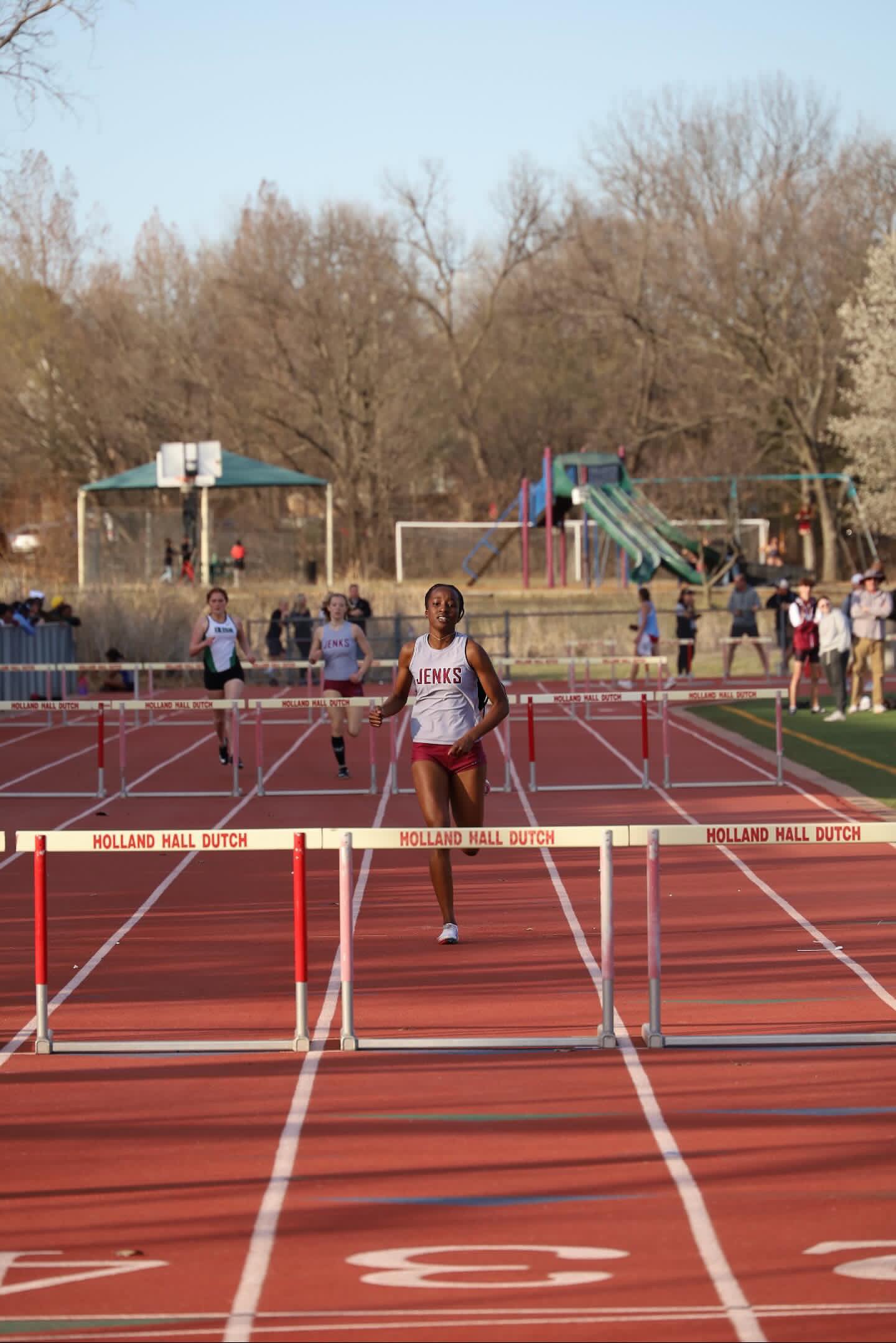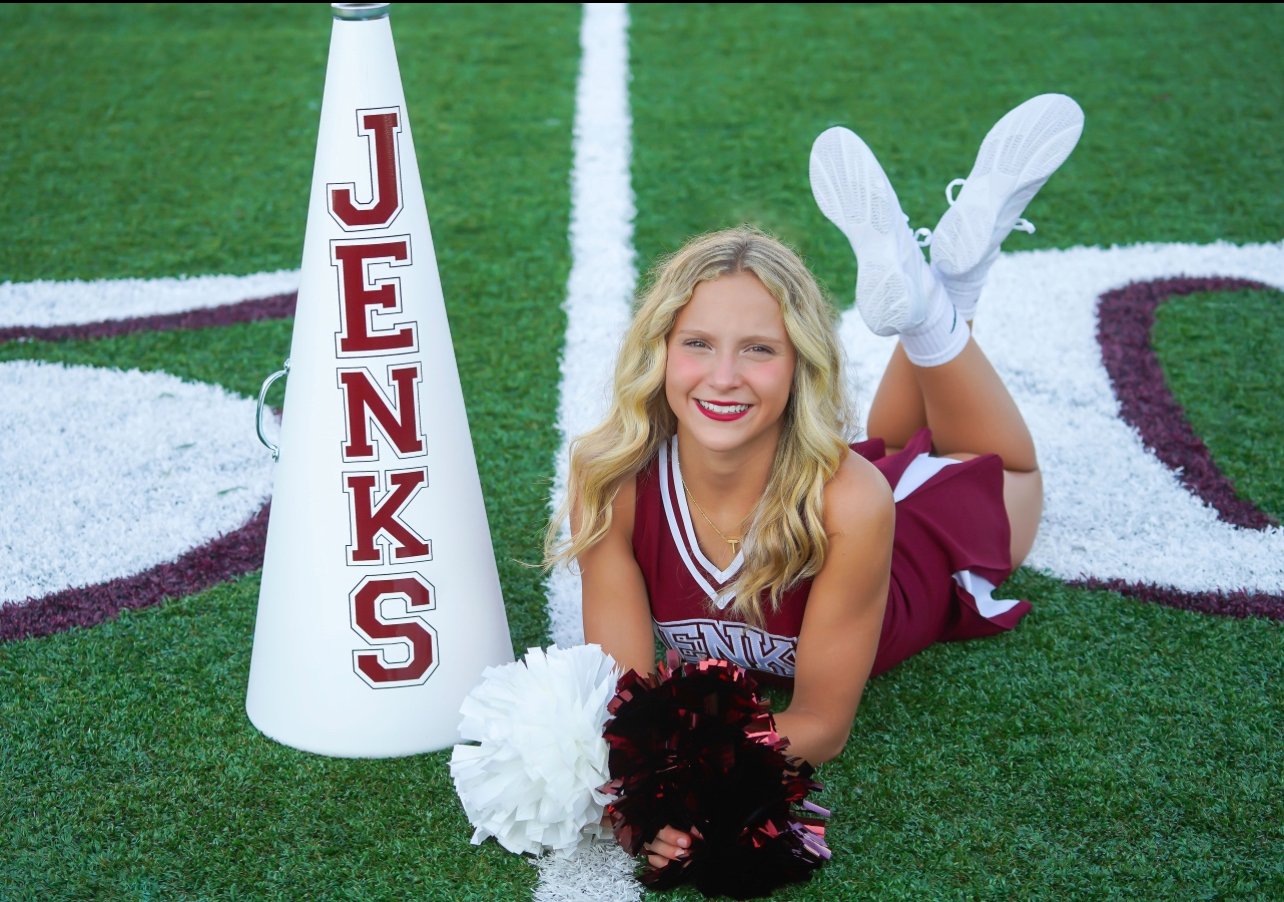No Pain No Gain…Right?
Photo credits: Favor Mulalira
By Isabella Quintero
The crack of a bone, the tear of a muscle, the collision of two heads against each other. The world spins around and around until you crash against a rough surface, feeling the ache spreading through your body. You scream out in agony, clutching onto the wound, trying to ease the pain that shakes you violently to your core.
Sports related injuries can get pretty violent, especially when they’re recurring. Which happens so often because of the lack of care that goes into them, or the rush to finally be healed when it's too soon. Not only is the injury itself horrible, but the possibility of your future in sports being ripped away from you in the same amount of time it takes to get hurt is not a thought many athletes like to think about.
Jason Baker, senior at Jenks high school, and player for the Jenks Varsity Soccer team, shared his own experience with his soccer inflicted injuries that have occurred during his time playing for Jenks.
Jason Baker posing for a picture at a soccer game. Photo credits: Jason Baker
Baker has pulled both of his hamstrings twice, one time pulling a part of his pelvis off, spraining his ACL, LCL, and tearing his meniscus. Which shows that many athletes tend to get even more hurt once they attempt to come back from their injuries, without realizing they aren’t quite ready yet.
“I reached out in a game and pulled my hamstring which fractured part of my pelvis,” said Baker. “I then played 3 weeks later in South Carolina because I assumed it healed and pulled off parts of the bone when I tried to lunge for the ball.”
Baker reveals that he was out for two months after this, and it took him about another month for him to be where he was before.
Athletes take their physical health very seriously but even the most perfect, health-conscious athlete, can get tragically injured.
Baker says that he stretches constantly to help him feel less fatigued and to play at a higher level. His injuries have decreased his flexibility to less than the average player, so he stretches when he wakes up, before practice, after practice, and before he goes to sleep.
Being injured on its own is already a bad experience to go through, but being injured while the rest of your team is doing something important that you can’t be a part of, is a million times worse.
Baker cheered his team to state victory in May despite his injury.
Baker followed his team last May, during his junior year, to the soccer state championship to cheer them on, but was unfortunately not able to play. While the team won and he got to celebrate with them, the memory is still bittersweet because of the brace he was wearing that held him back from stepping out on the field himself. He only hopes that the team this year has the chance to make it to championships again so he can live out his senior year win from the field.
Torrance Javersak, a sophomore at Jenks high school, and member of the Jenks Varsity Cheer squad, has had many injuries caused from cheering. Cheer requires an immense amount of strength, concentration, and courage. To let yourself be thrown up into the air or being the one throwing someone in the air and catching them in a way that looks easy and beautiful, takes strategy and risk.
Torrance Javersak for Jenks Varsity Cheer. Photo credits: Torrance Javersak
The injuries that come with cheer could be never-ending. From the usual concussion, to broken bones, dislocations, muscle tears, even as far as deadly possibilities of spinal issues that could lead to paralyzation.
The sport isn't always taken seriously because a lot of people don’t realize all the hard work that is put into it and the risk cheerleaders take—all while looking pretty and effortless doing it.
“My back will unfortunately always be something I'll have to worry about,” said Javersak regarding her grade 1 spondylolisthesis, a spinal condition in which a vertebra slips forward onto the bone below it, that she acquired from cheering.
“Tumbling and lifting athletes that are close to your own weight is brutal on the spine. I work on my core to help with the stabilization of my back and get monthly back injections to help with the numbing,” said Javersak.
Javersak also reveals that she had a dislocation in her knee that left microtears. She had to go through physical therapy, going at least 4 days a week. As well as the anti-inflammatory injections issued for her knee, she also had to wear a small neoprene brace that gave her patella support until her lateral knee was strengthened. It took an entire season for the injury to heal.
Jill Twiehaus on the court and in the zone. Photo credits: Jill Twiehaus
Jill Twiehaus, a senior at Jenks high school, and Jenks Varsity Girls Basketball player is currently injured and off of the court. While a sprained ankle is a relatively small injury, she has learned from her past injury and is easing back into the sport with caution.
“I sprained my ankle in training freshman year,” said Twiehaus. “I came back way too soon and made it way worse than it was. I ended up being in and out of playing for about a month because of it.”
She also sprained her back that same year but was lucky enough to come back from it after a week of resting.
Recalling how both of her freshman injuries set her back mentally, Twiehaus says that she missed most of her freshman season and it was hard to see a whole season basically down the drain. However, she’s learned from those injuries and is going one step at a time to get back on the court.
Twiehaus going for a two-pointer against Owasso. Photo credits: Jill Twiehaus
“I recently sprained my ankle and have taken almost 2 weeks off,” said Twiehaus. “I’m slowly easing back into it to be safe.”
Hopefully her caution and hard work pays off and allows her to return to the sport she loves.
Favor Mulalira after winning the gold at track regionals. Photo credits: Favor Mulalira
Favor Mulalira, a senior, and varsity track runner for Jenks high school, is excited to get back into competing and racing after her much-needed break from an injury last season.
“In the middle of last season, I rolled my ankle during a hurdle practice and injured the cuboid bone in my foot,” said Mulalira. “The pain was awful and every step I took scared me. I ended up being out for four or more weeks because I tried to rush the resting process and ultimately made it worse.”
The injury caused Mulalira to have to miss important varsity meets and runs, instead, spending her mornings in pain at physical therapy. While the therapy helped her bounce back even stronger than before, she missed out on a big part of her junior year in track. Because of this, she plans to take advantage of every second of her senior season. Refusing to dwell on the negativity that comes with getting injuries and instead, focusing on getting stronger.
Mulalira running hurdles at a track meet. Photo credits: Favor Mulalira
“Track season is my favorite season and I feel like now, being a senior, it’s my last chance to prove myself and perform my best,” said Mulalira.
Mulalira struggled through the healing process not only physically, but mentally and emotionally. The grilling questions of “how are you feeling?” and “when are you going to start running again?” made it difficult for her to stay positive through it all, but she worked on changing her attitude and finding the positive side of her situation.
“I genuinely believe that the more positive you are about getting better, the quicker rehabilitation occurs, and the faster you’re back to doing what you love,” said Mulalira.
She reveals that focusing on the positive parts of her life and the people she loves most, helped her get past her injury and erase the negative thoughts from her mind.
Being an athlete is putting yourself at risk and giving yourself an open shot to get injured. But so many people do it anyway because it's fun, exciting, and makes them happy in the long run. Whether you’re out for a whole season or just a week, the determination to get back out there helps many get through their injury.
It's when your injury is so bad that you can't come back from it, or college scouts are watching and you can’t perform, that the determination and positivity of your future disappears. Putting all of your eggs in one basket to be an athlete for the rest of your life, only for the entire future you planned to end because of an injury you can’t bounce back from.
These athletes demonstrate that the passion and determination are there, and that they see the risk as something that’s worth it. Nevertheless, cataloging all of these common and brutal injuries demonstrates that the danger is a factor that people should consider before committing to competitive sports. Most importantly, we can work on acknowledging these experiences and working towards building a culture around sport injuries that values rest and healing, rather than pushing through the pain and potentially causing career-ending injuries.
For more information on Jenks Athletics check out @jenksathletics on Instagram. For more information on Jenks Sports Medicine, check out Abby Kornele’s article: link to Abby’s article once published







